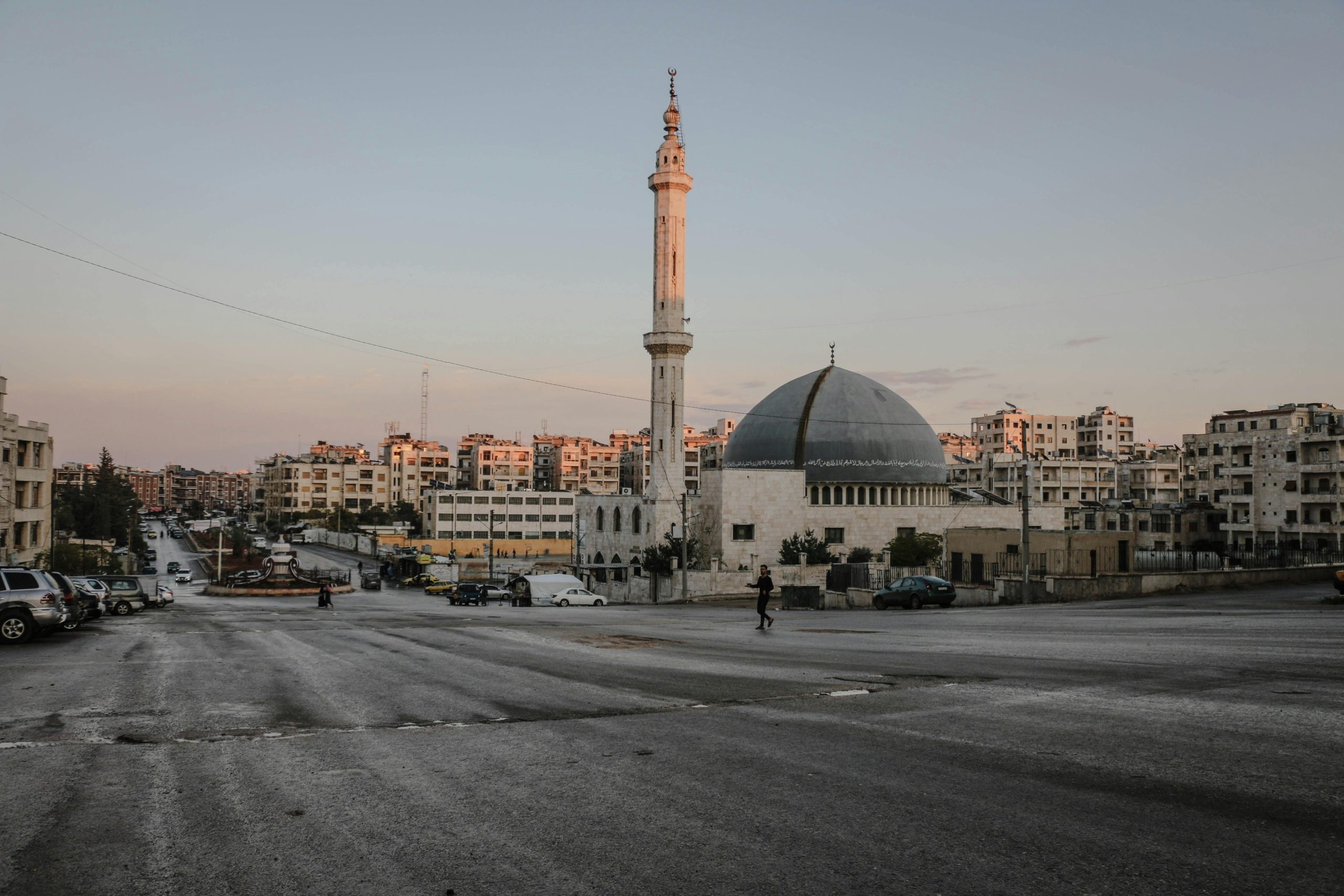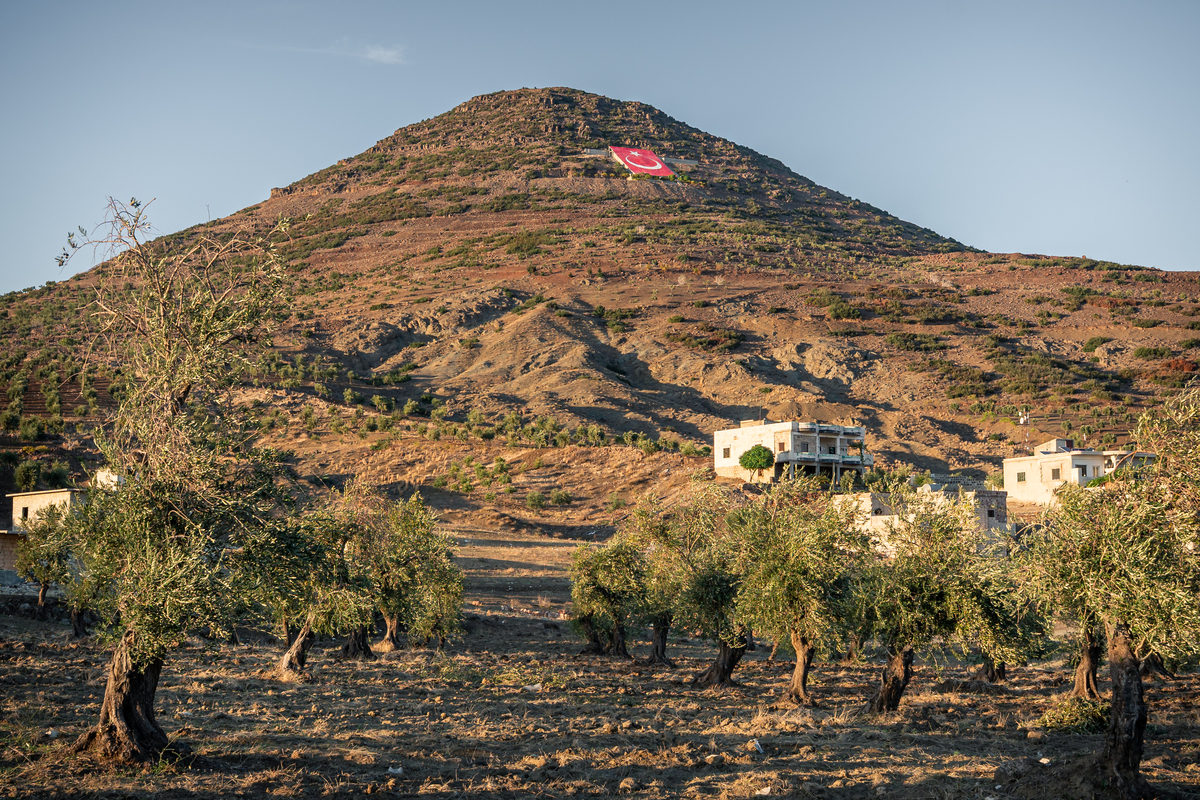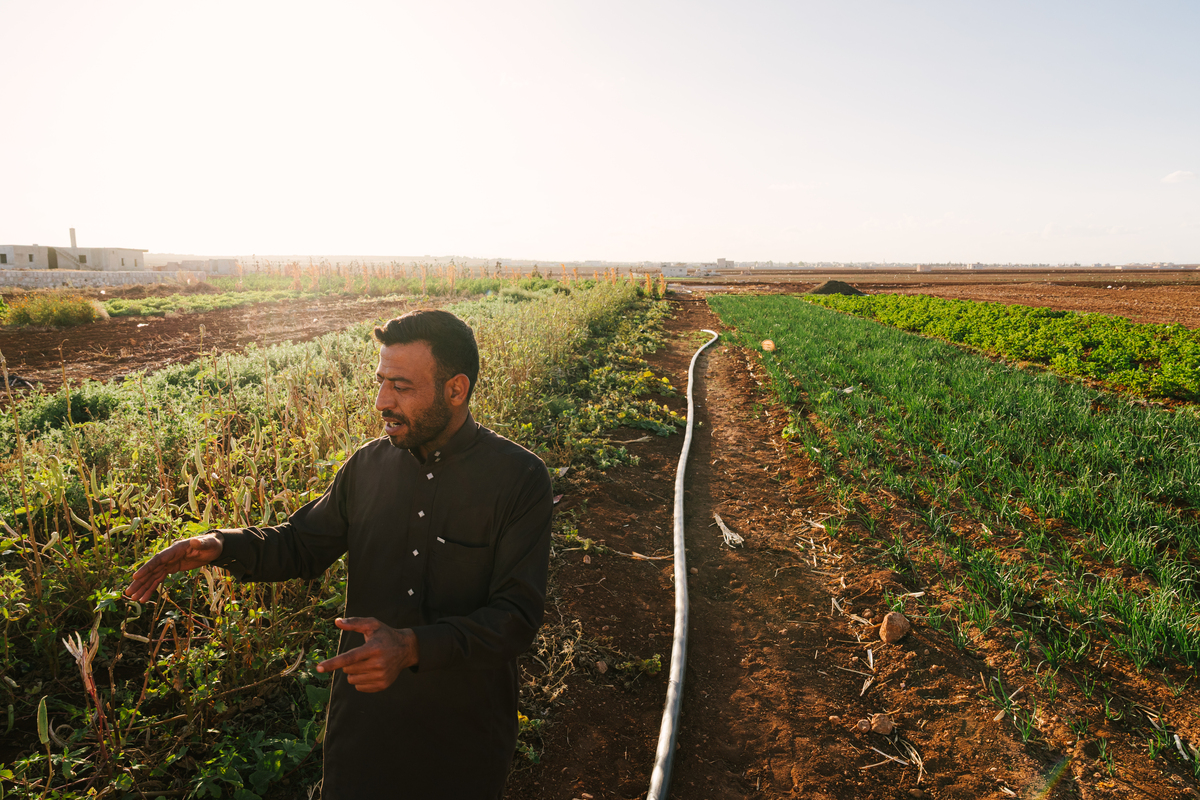French Foreign Jihadi Fighters in Syria Battle New Government Forces Over Custody Case
Al-Shueib Mosque in Idlib, Syria | Picture Credits: Ahmed Akacha/Pexels
In October 2025, Syria’s new security forces clashed with a camp of French jihadists in Harem, on the outskirts of Idlib province, over a seemingly domestic issue: who gets custody of a young French girl.
The family dispute over the fate of an 11-year-old girl, the daughter of a former fighter and a French woman, led to a violent outbreak and political and legal turmoil, in a chain of events highlighting the complex relations between a reconstituted Syrian state, its jurisdiction, and the foreign combatants.
The French Camp of Harem
From the onset of the war, thousands of foreign fighters flocked to the Syrian front to join existing factions or create their own organizations. Many of these “migrants of jihad”, who came to be known as muhajir, joined the Islamic State (ISIS), while others aligned themselves with Jabhat al-Nusra, the then-Syrian branch of al-Qaeda.
Now, after the fall of the Assad regime, the new Syrian interim government is attempting to rein in these jihadists and retake control of all renegade factions, but in a pocket of northwestern Syria, near the Turkish border, a small, fortified camp continues to survive: the Firqat al-Ghuraba, the “Brigade of Foreigners.” Founded eight years ago by Franco-Senegalese Omar “Omsen” Diaby, the camp has become one of the main places of residence for French-speaking fighters in Syria.
Originally from Nice, in southern France, and once an armed robber before becoming a jihadi preacher, Omar Omsen rose to prominence as one of the main organizers facilitating the recruitment of French and French-speaking muhajirs to Syria between 2013 and 2015.
Most groups from the jihadist rebel coalition settled in Idlib, and between 2017 and 2018 many reorganized into Hay’at Tahrir al-Sham(HTS), which soon dominated the enclave under Ahmad al-Shara’s leadership.
Several smaller factions, however, chose to remain independent and semi-autonomous –Omar Omsen’s group, which faced rising tensions with HTS’s emerging state-like institutions, was one such faction.
Omsen was accused of exerting judicial authority without legitimate religious or institutional credentials; for that and other accusations, he was arrested and imprisoned twice between 2018 and 2022.
After Bashar al-Assad’s regime fell in December 2024 and Ahmad al-Sharaa formed an interim government in Damascus, Omsen and his followers – nearly 130 men, women, and children – remained in the Harem camp. They indirectly aligned themselves with the new military structure, under the umbrella of Ansar al-Tawhid (in the 82nd division). But, even so, they continued to live on the fringes of the emerging order.
From a Family Dispute to a Global Confrontation
At the end of October, the Syrian interim government’s forces and the French muhajirs had their first direct clash. The cause appeared to be private in nature: a family dispute over the custody of a young French girl born in Syria, the daughter of a former camp fighter and a French woman.
The mother, who had recently left the camp and resettled in government-controlled Idlib, appealed to the Syrian tribunal to obtain custody, and according to local sources, Syrian security forces had been ordered to return the child to her mother. However, Omar Omsen considered it an internal matter to be decided by the camp’s own authorities, which had ruled that the girl should remain with her father.
The Amargi spoke with both the French muhajir who serves as the girl’s tutor in the camp and with her mother.
The girl’s tutor claimed that the mother wanted to marry the 11-year-old girl off for a large sum of money, which she would use to buy a car. “The girl came back to the camp to live with me, my wife, and her sisters, with the father’s consent, who gave me custody,” the tutor said.
The mother, meanwhile, has stated on Telegram channels that she was trying to rescue her daughter from what she described as a sect.
The standoff escalated quickly: authorities accused the camp residents of holding the girl illegally, and a Syrian government military convoy reportedly attempted to enter the camp to retrieve her.
Ultimately, a written agreement ended the hostilities: stipulating the withdrawal of heavy weapons, the entry of the Syrian interim government’s forces into the camp, and the launch of an investigation into public order charges brought against Omar Omsen.
The French muhajir told The Amargi that the attack involved about a thousand Syrian troops, and lasted almost ten hours, from just past midnight at 12:30 a.m. to 11 a.m.:”They opened fire first, using heavy weapons – dushkas [machine guns], drones with grenades – they created a genuine front line.” But by midday, an intervention from another group ended the assault: “In the end, the Uzbeks arrived, and to avoid making things worse, the Syrians eventually pulled back.”
Ultimately, a written agreement ended the hostilities: stipulating the withdrawal of heavy weapons, the entry of the Syrian interim government’s forces into the camp, and the launch of an investigation into public order charges brought against Omar Omsen.
Behind the scenes, negotiations and the judicial process involved several foreign Islamist figures who were eager to avoid bloodshed and preserve their own fragile relations with the authorities in Damascus – among them was an emissary from the new Ministry of Defense, as well as Tajik, Uzbek, and Uyghur fighters who were already part of the newly-formed Syrian army.
For the French fighter, the incident was no coincidence:
“We’re convinced there was a deal behind the scenes between Damascus and Paris. Omar Omsen is internationally wanted for his responsibility regarding the arrival of most francophones to Syria.”
The question of foreign fighters and jurisdiction
But as the government tries to present itself as a legitimate actor in the eyes of the international community, the presence of foreign fighters have become a symbolic burden
The fall of Bashar al-Assad disrupted the balance of power among Islamist and jihadist factions in Syria, particularly the relations between HTS and other groups. The new interim government, led by Ahmad al-Sharaa and composed of many former-HTS officials, now seeks to restore a semblance of order within a national Syrian framework.
But as the government tries to present itself as a legitimate actor in the eyes of the international community, the presence of foreign fighters has become a symbolic burden.
The foreign fighters remain uncomfortable reminders of HTS’s ideological roots, from which al-Sharaa and his new cabinet want to distance themselves. Many of the fighters still call for a transnational caliphate, reject the twentieth-century borders of the Middle East, and challenge the global order. Their rhetoric glorifies violence and jihadist aspirations and has revived fears among world powers of an Afghanistan-like scenario, where the Taliban once offered al-Qaeda a safe haven.
Seeking to quell those factions and secure international recognition, HTS is expanding on a strategy first initiated eight years earlier in Idlib, where they developed strategic ties with Turkey, and later with the United States. In Idlib, these ties led to the capture, assassination, and targeting of many prominent jihadist figures by coalition drone strikes, often with the help of HTS. Even the notorious ISIS leader, Abu Bakr al-Baghdadi, who was killed in a U.S. operation that was aided by the Kurdish-led Syrian Democratic Forces in the Idlib region in 2019, is widely believed to have been located partly thanks to intelligence reportedly shared by HTS.
Since al-Sharaa’s rise to power in December 2024, this policy has been commonly utilized. Figures deemed threats to national sovereignty or regional stability have been imprisoned, assassinated, or targeted by CENTCOM – the United States Central Command, responsible for U.S. military operations across the Middle East – and several key leaders of Ahrar al-Sham, Ansar al-Islam, and Hurras al-Din have been eliminated.
Other jihadist groups have faced growing pressure to integrate into the new Syrian army. So far, the Uyghur fighters of the Turkistan Islamic Party and Ansar al-Tawhid have been incorporated into the 84th and 82nd divisions, respectively.
On the Telegram channels of semi-autonomous factions such as Omar Omsen’s Firqat al-Ghuraba and Ansar al-Islam, strong criticism persists. These groups denounce the direction taken by al-Sharaa’s government, its handling of minorities, its diplomatic overtures toward the US, Israel, and Russia, the targeting of key jihadi figures, its management of religious affairs, and judicial policies. HTS, they argue, has abandoned its purist and transnational Islamist vision in favor of a nationalist-Islamist pragmatism.
In a country still marked by disputes, all exacerbated by years of war, the persistence of civil courts derived from the old Syrian system, remains unacceptable to jihadist factions
At the heart of these tensions lies the issue of law and jurisdiction. In a country still marked by disputes, all exacerbated by years of war, the persistence of civil courts derived from the old Syrian system remains unacceptable to jihadist factions. On their online channels, they call on Ahmad al-Sharaa to establish “shura” councils of religious scholars following the Salafi-jihadist interpretation of Islamic law.
This symbolic, institutional, and ideological struggle extends far beyond Harem and the French jihadists. It opposes two competing visions of Islam, law, and governance:
On one side, a reborn Syrian state that wants to restore legal authority and gain international legitimacy within a nationalist-Islamist framework – led by former-HTS leaders seeking to whitewash and distance themselves from their jihadist past.
On the other hand, jihadist movements reject the borders of the Syrian nation-state and claim a divine legitimacy rooted in its own scholars and courts, seeking to deepen its local entrenchment and assert political, legal, and military autonomy.

Armin Messager
Armin Messager is a French researcher in sociohistory and political science, and a journalist. His work focuses on Islamism, post-war rural transformations, and religious authority in the Middle East (Kurdistan, Iraq, Syria, Iran). He conducted extensive fieldwork in the Kurdistan Region of Iraq, where he examined the rise of the Muslim Brotherhood and later Salafism in peripheral and rural areas after the Iran–Iraq War, exploring their social and territorial roots.




